Hidden Corners of LondonIt is a temptation when visiting London to allow yourself to be carted around from one major site to another without getting the real feel of London. You must wander off the beaten track and find the unexpected hidden corners of London. Hidden Corners of London are places where you can have a quiet wander around. If you choose a weekend you will almost certainly be on your own, even weekdays you will find them peaceful.
Amen Corner
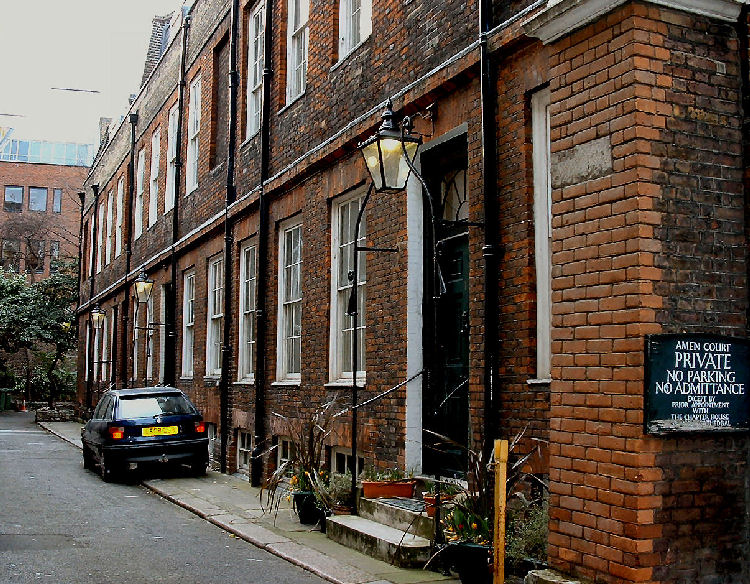
The only residential street within the shadows of Saint Paul’s Cathedral, indeed the quietest spot within the square mile. The picturesque 17th - century houses built for the clergymen of Saint Paul's Cathedral with the peaceful name of Amen Corner. Protected by at the only surviving wall of Newgate Prison complete with gas lamps. The ironwork around the doors of the houses still holds the torch snuffers as well as the old gas lamps.
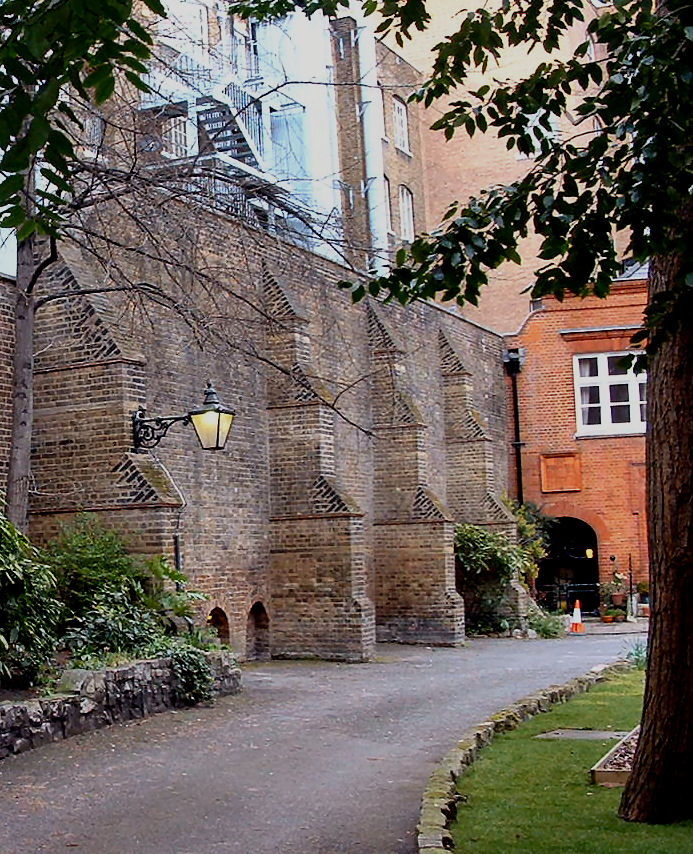
An old piece of Newgate Prison Wall That Still Survives today.
Ely Place
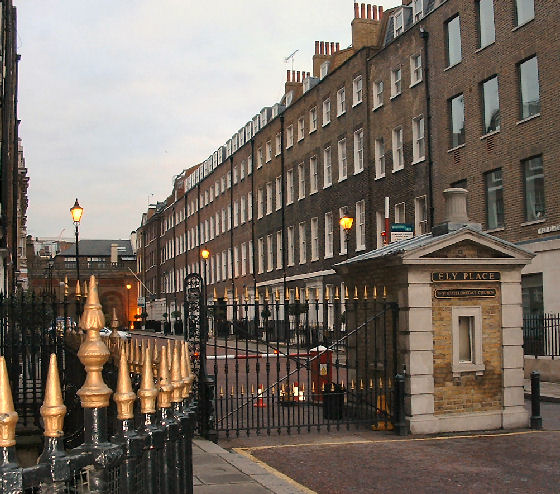
Ely Place, where the Beadle is still the law behind these gates, his little lodge can be seen on the right in the photo. At the end of Ely Place can be found St Ethelreda's church. Gloucester: When I was last in Holborn, I saw good strawberries in your garden there: I do beseech you send for some of them.
The gardens of St Ethelreda were said to produce the finest strawberries in London and were mentioned in Shakespeare's Richard III. (Act II, scene 4),
Gloucester: My Lord Ely!
Ely: My Lord?
Gloucester: When I was last in Holborn, I saw good strawberries in your garden there: I do beseech you send for some of them.
A Strawberry Fair is held every June in Ely Place for charity.
As you pass back on your right a very narrow passage runs between Ely place and Hatton Garden, hiding Ye Olde Mitre Tavern. Look at the metal bars at the entrance of the narrow passage, these were installed to preventing horses and riders passing through.
Henry VIII's Hidden Barn
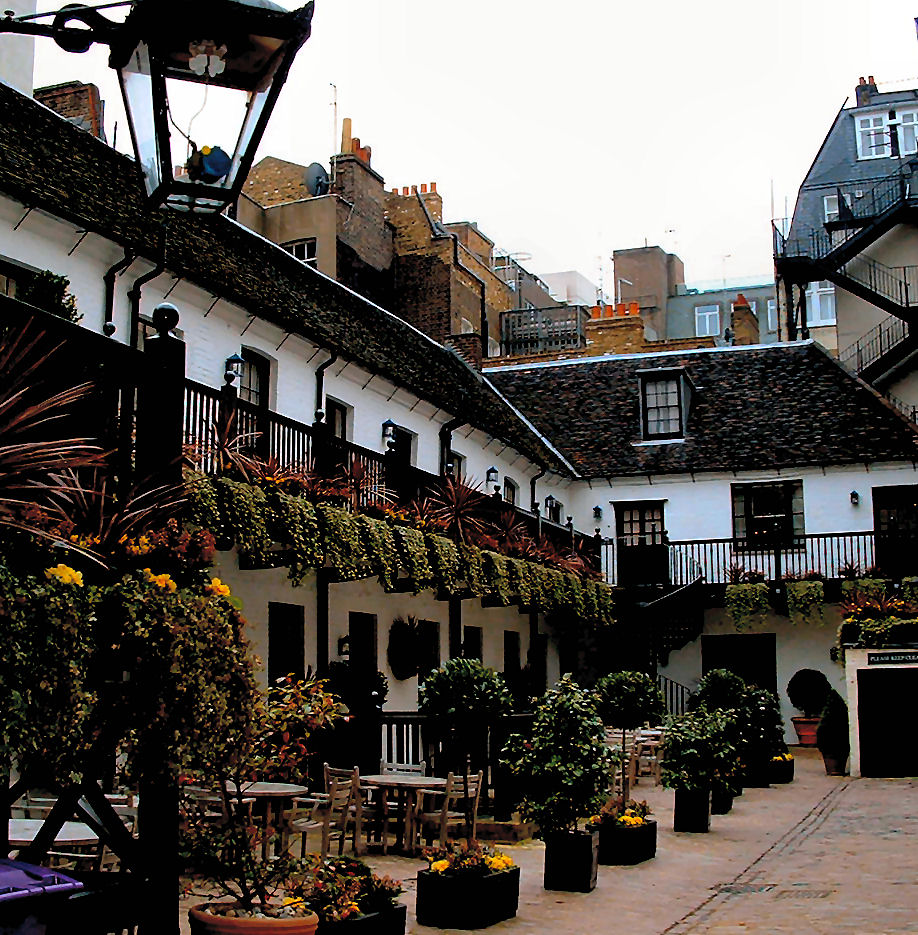
This elegant hideaway goes unnoticed by the busy visitors to the clubs of St James's street. The lovely displays of flowers and antique lamplight decorating this rather idyllic courtyard of the Blue Ball. Today it belongs to the rear annexe of the Stafford hotel. During the eighteenth century, it was a stable and going still further back was said to have been a barn belonging to King Henry the VIII, then part of his Royal Palace of St James's.
Pickering Place
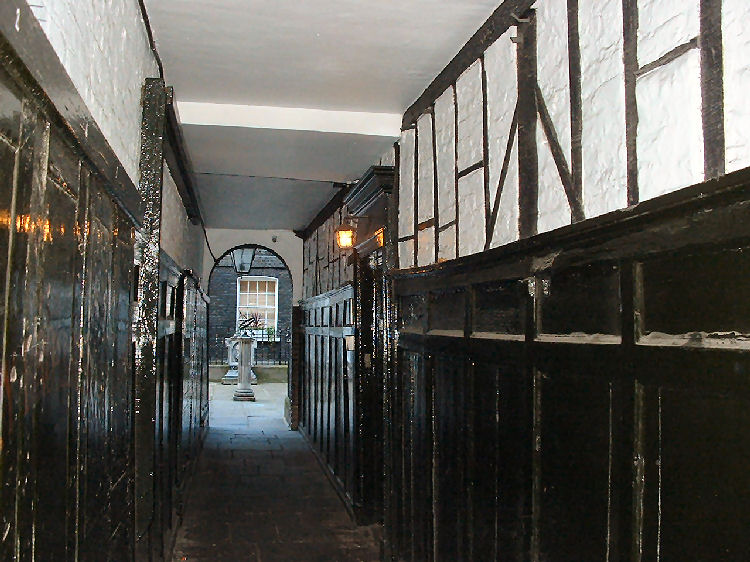
Almost opposite King Henry’s old barn is Pickering Place, squeezed in between two 16th century shops along this narrow passageway. The right hand wall is Elizabethan and is half timbered. Pickering Place was the last duelling ground in London.
Here you can go back in time to the days when England owned America, the Republic of Texas Legislation being housed here where the office with the lamp on the right glows above the office door. This passageway leads you into a small courtyard that belongs to the 16th century where nothing has changed. In the courtyard you will find a sundial in the form of an astrolabe, and the head of Lord Palmerston (part of a tombstone).
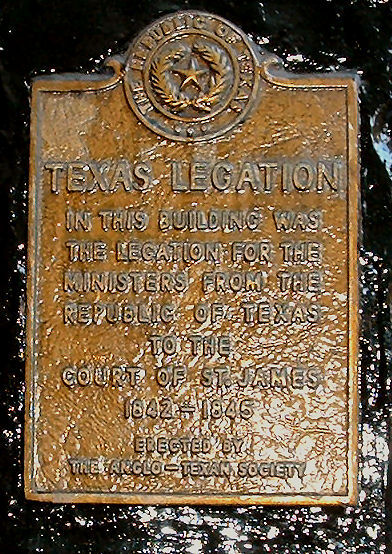 The plaque on the side panel announcing the Republic of Texas legislation to the court of St. James 1842 - 1845.
The Jamacia Wine House
The plaque on the side panel announcing the Republic of Texas legislation to the court of St. James 1842 - 1845.
The Jamacia Wine House
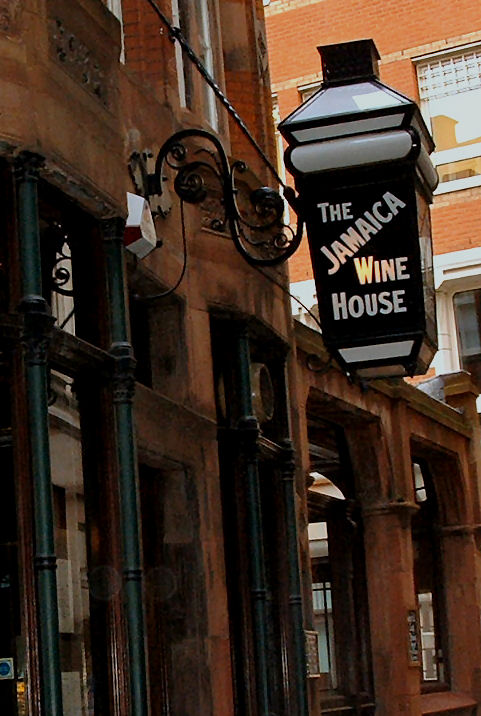
The narrow courts that the experienced office workers juggle their way through after a busy day, with well-rehearsed ease. Where by chance the unexpected explorer glimpses these passages will find themselves back almost in the seventeenth century. St Michael's Alley, one such place where the delights of coffee were first sold by Pasqua Rosee setting up his shop on the site now occupied by the late Victorian - Jamaica Wine House. The coffee-houses now swamp the city with their exuberant prices, although they are still much cheaper than they were in those distant days.
Simpson's
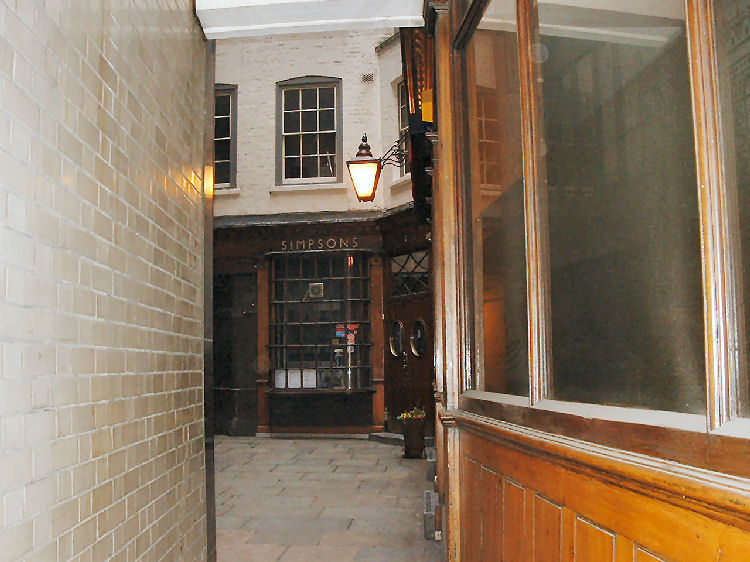
And their neighbours along the same alleyway is Simpson's.
Riceyman Steps
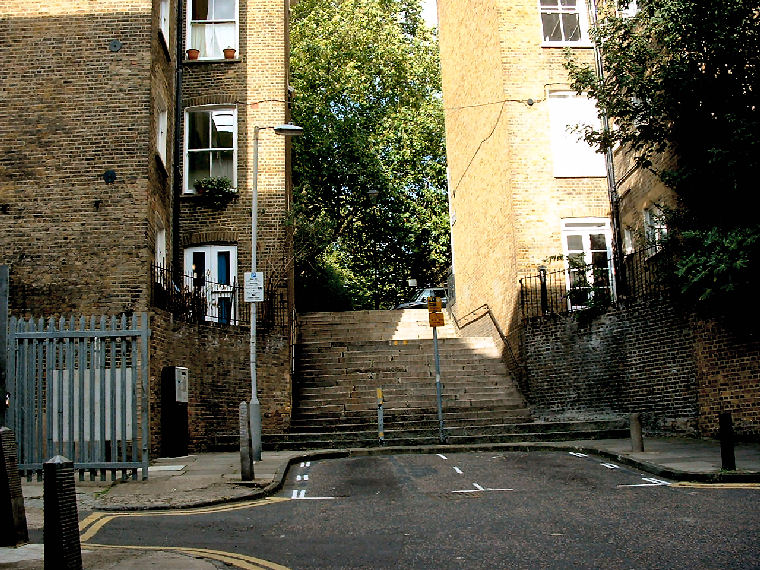
This is the Location of Arnold Bennett's Riceyman Steps off Kings Cross Road, that tells a wonderful story of 1919's Edwardian London.
In 1888 at the age of twenty-one, Arnold Bennett left Staffordshire for London, ten years later he had his first novel, A man from the North published.
The compelling book Riceyman Steps he wrote during his mid-fifties in 1923, it portrays life around these steps and is set in Clerkenwell. With the following description, "Riceyman steps, twenty in number, are divided by a half landing into a series of ten." The central figure of this story is Henry Earlforward a bookseller who has his bookshop with one window facing Kings Cross Road and another window and door in Riceyman Steps. At the top of the steps is Granville Square,
that in this book becomes Riceyman Square. The description of the Square and surrounding Clerkenwell area, just after the first World War is truly remarkable. If you want a good read of this near-forgotten classic book that brings to life Clerkenwell in the autumn of 1919 then treat yourself to the hard to find,
Arnold Bennett, Riceyman Steps.
The old tree in Wood Street
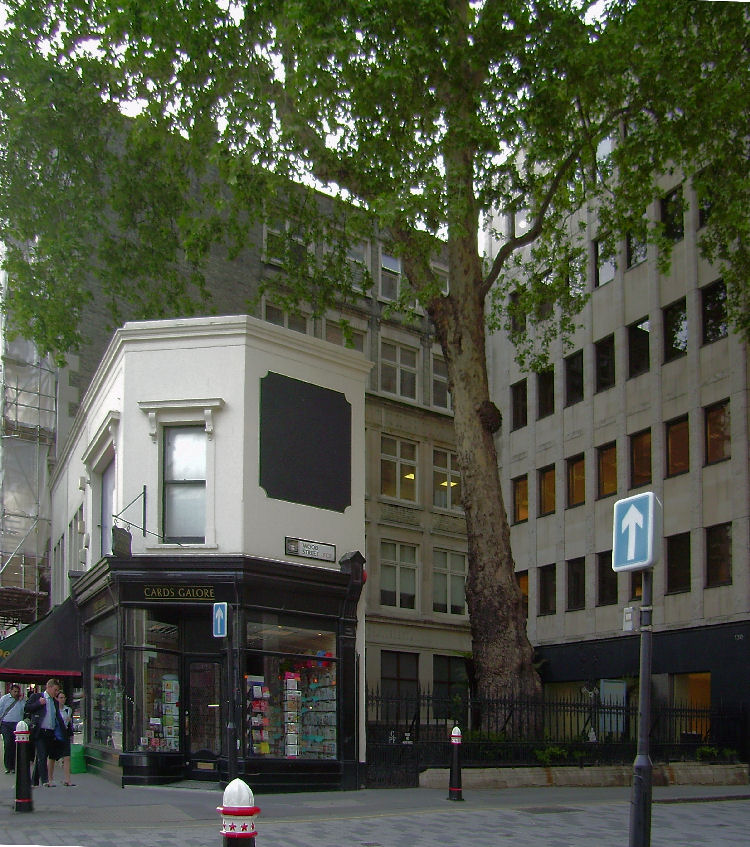
This famous tree marks the site of St. Peter in Chepe, a church destroyed by the Great Fire. The terms of the lease of the low houses at the west-end corner are said to forbid the erection of another storey or the removal of the tree. Whether this restriction arose from a love of the tree, as we should like to think, we cannot say.
All that remains to remind us of this ancient church is this quite, little garden churchyard and of course this famous tree.
Wordsworth has immortalised this fine tree in Wood Street by his plaintive little ballad;
THE REVERIE OF POOR SUSAN.
At the corner of Wood Street, when daylight appears,
Hangs a thrush that sings loud, it has sung for three years;
Shrine of O’meara Street
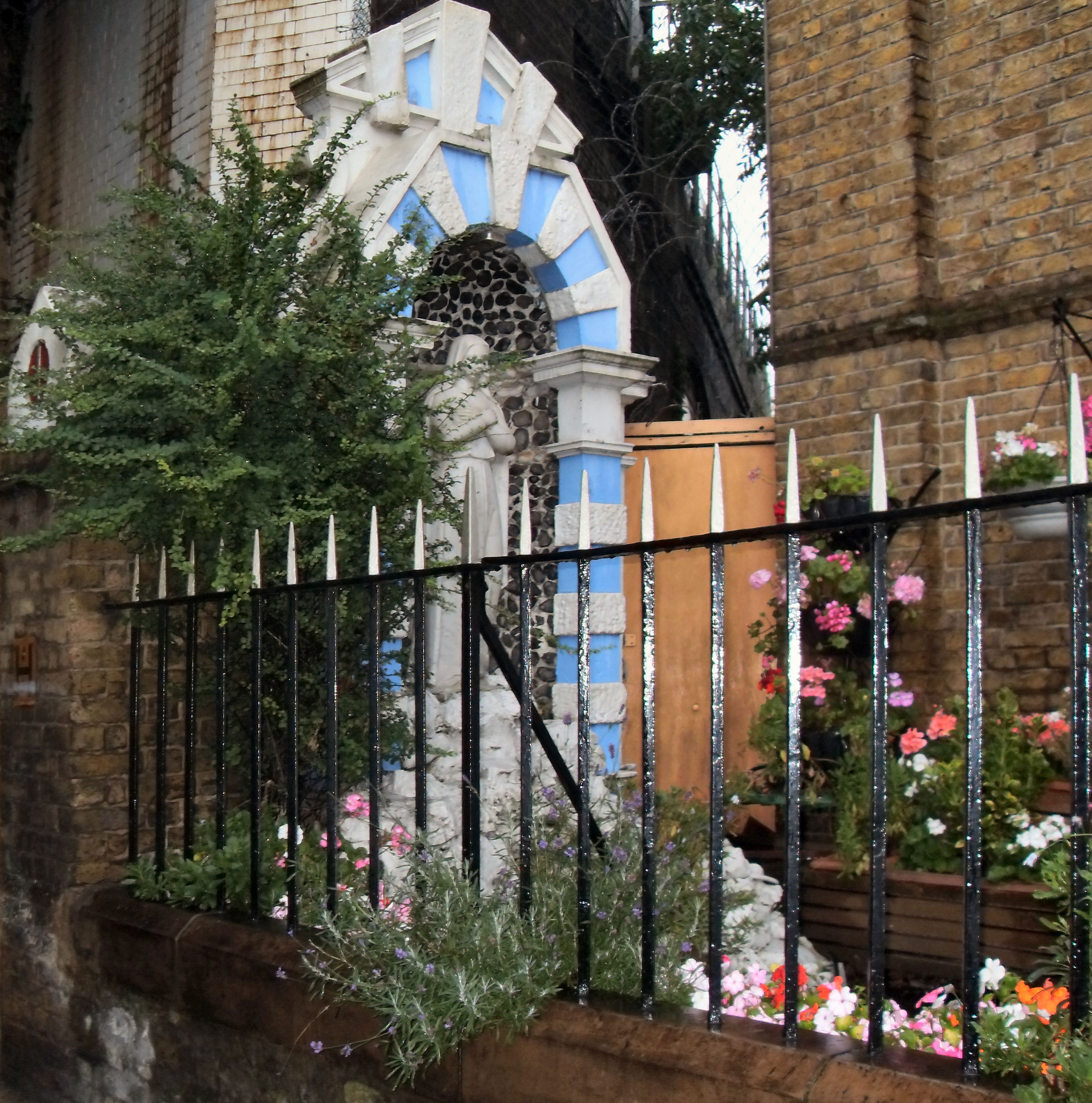
At the side of the railway arches that serve trains in and out of Waterloo Station, is the shrine of O’meara Street, built in the front area of The Church of the Precious Blood. It is the most unlikely spot to find this quiet corner of South London. Said to commemorate the nearby burial plot where some unmarked graves of the prostitutes from the medieval days of the Bishop of Winchester’s Bankside Stews were discovered. A nice spot to linger before returning to the mad rush.
London Time

Follow Us
The contents of this website are the property of knowledgeoflondon.com and therefore must not be reproduced without permission. Every effort is made to ensure the details contained on this website are correct, however, we cannot accept responsibility for errors and omissions.
© Copyright 2004 -
Contact Us | Advertise